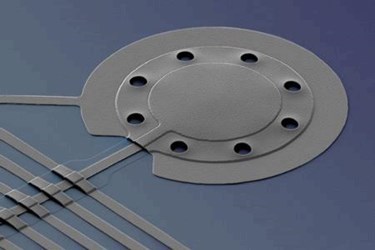'Squeezed' Light Cools Object Below Quantum Limit
By Jof Enriquez,
Follow me on Twitter @jofenriq

Physicists at the National Institute of Standards and Technology (NIST) has successfully cooled a microscopic aluminum drum to an unprecedented one-fifth of a single quantum of energy, the coldest a mechanical object has ever approached absolute zero.
Using a technique called sideband cooling, the NIST scientists previously cooled their microscopic drum to its lowest energy “ground state,” or roughly one-third of one quantum: the perceived quantum limit beyond which you can't make objects any colder, according to quantum mechanics.
But the researchers thought that this fundamental limit could be overcome, specifically by "squeezing" lasers in a quantum vacuum, where it is possible to remove noise or unwanted intensity fluctuations inherent in light, which has limited the lowest temperatures that can be reached in previous experiments. A custom-built superconducting circuit generated the desired microwave photons that were purified or stripped of intensity fluctuations.
"Noise gives random kicks or heating to the thing you're trying to cool," said NIST physicist John Teufel in a news release. "We are squeezing the light at a 'magic' level — in a very specific direction and amount — to make perfectly correlated photons with more stable intensity. These photons are both fragile and powerful."
"Squeezed light can be used to cool the motion of a macroscopic mechanical object below the quantum backaction limit," the NIST scientists write in the journal Nature. "We first cool a microwave cavity optomechanical system using a coherent state of light to within 15 per cent of this limit. We then cool the system to more than two decibels below the quantum backaction limit using a squeezed microwave field generated by a Josephson parametric amplifier."
With this technique, they were able to cool the microscopic drum to one-fifth of a single quantum, or packet of energy. During the experiment, the drum, which is 20 micrometers in diameter and 100 nanometers thick, beat or vibrated 10 million times per second, while its range of motion fell to nearly zero. The researchers claim that cooling objects that are large or operate at low frequencies, which are the most difficult to cool, is also possible beyond the generally accepted limit.
“In principle if you had perfect squeezed light you could do perfect cooling,” Teufel told the Washington Post. “No matter what we’re doing next with this research, this is now something we can keep in our bag of tricks to let us always start with a colder and quieter and better device that will help with whatever science we’re trying to do.”
This cooling technique could be used to build better scientific instruments with unprecedented sensitivity, as well as in future applications, such as hybrid quantum computers, combining both quantum and mechanical elements.
"With our technique, even low-frequency mechanical oscillators can in principle be cooled arbitrarily close to the motional ground state, enabling the exploration of quantum physics in larger, more massive systems," the NIST researchers write in the published study.
Scientists also are using other methods – such as Raman scattering and pump laser absorption enhancement – to cool solids using light.
